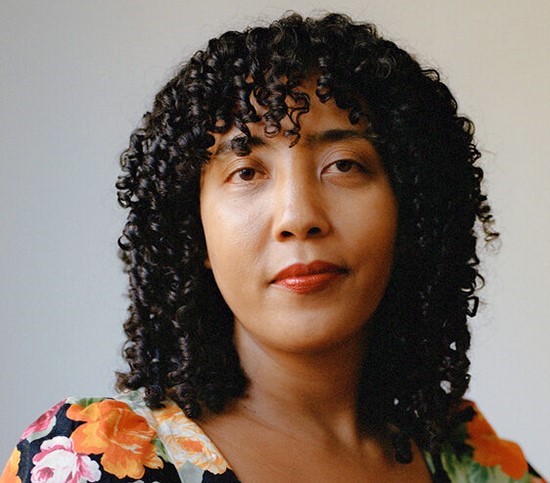“Have you ever walked between two great big airplane hangars and
it made you feel very small and very strange?” art dealer Richard Bellamy is
said to have asked. “Well, that is minimalism.”
اضافة اعلان
There are no airplane hangars in Zambian American writer Namwali Serpell’s
second novel, “
The Furrows,” and the tone is not spare. But the book is so
laden with odd convergences and there are so many brushes with demons that it
does leave you feeling tiny and weird.
“The Furrows” is about Cassandra, or Cee, Williams. When she was 12 she
went swimming in the ocean with her little brother, Wayne, who was seven. A
storm rose, and Wayne vanished.
 An undated photo of Namwali Serpell.
An undated photo of Namwali Serpell.
The blame falls on Cee, even though 12 and seven are tender ages to leave
children unattended at the shore. Wayne’s apparent death destroys the family.
Their parents divorce. Cee, who grows up in the suburbs of Baltimore, works
through a lifetime of trauma and elite therapy. “Wayne’s absence in our lives,”
she says, “had become the drain toward which everything ran”.
Wayne is gone, but the continuum of Wayne rushes onward. Men who strongly
resemble him keep appearing in Cee’s life. She sleeps with one of them. These
men tend to be as handsome and charming and scary as Hickey in “The Iceman
Cometh,” last played on Broadway to chilling effect by Denzel Washington.
This book review is going to have a disappointed tone that probably is not
fair to Serpell. She so thoroughly raised expectations with her first novel,
“The Old Drift” (2019), that “The Furrows” cannot help but seem to follow
halfheartedly in its wake.
“
The Old Drift” was a magic-realist epic, a welter of words, set largely
in what is now Zambia. It tracked the fortunes of three families (Black, white,
and brown) from early colonial days through the AIDS crisis and beyond.
The prose was electric. The ambition was outsize. Serpell seemed to have
arrived, fully formed, as an heir to writers such as Gabriel García Márquez and
Salman Rushdie. “The Furrows,” on the other hand, is an atmospheric literary
novel not so different from others of its kind.
Serpell is interested in effects here more than in truth dealing. With its
scrutiny of doubles, of doppelgängers, of déjà vu, of parallel existences, of
the transmigration of souls, of hints of incest, of shifting points of view,
the book is a mind-twist.
It may make you think of the work of filmmakers such as Christopher Nolan
and Jordan Peele and, in her latest, Olivia Wilde — alas, not always in a good
way.
Lord, I want the clarity of catastrophe but not the catastrophe.
Like everyone else, I want a storm I can dance in.
I want an excuse to change my life.
Other men do not simply resemble Wayne. Some turn up who share his name.
If we are supposed to read anything into the uncomfortable fact that Wayne
Williams is also the name of the long-imprisoned prime suspect in the Atlanta child
murders of the late 1970s and early ’80s, the clues escaped me.
The book’s title has a twin meaning, too. Wayne disappears into the
“furrows” of the waves. Later, the word begins to refer to the way that “time’s
got grooves in it. A moment is a needle and time can skip like a record.”
Timelines collapse in “The Furrows.” The world seems to be collapsing,
too. There are intimations of the apocalypse. At various moments, buildings
buckle, and masses of people start running; there is broken glass, and helicopters
fill the air. We are meant to wonder: Are these scenes real or imagined?
Serpell’s characters appear to long for violent change, the way we all do
at times, a feeling expressed in Franny Choi’s marvelous poem “Catastrophe Is
Next to Godliness”:
“Lord, I want the clarity of catastrophe but not the catastrophe.
Like everyone else, I want a storm I can dance in.
I want an excuse to change my life.”
There are many other things on this novel’s mind. Serpell intelligently
appraises race and class. Cee — whose mother, a painter, is white and whose
father, an academic, is Black — is hyper-aware of a betweenness (“You’re
supposed to be pretty if you are mixed race,” she says). She has, at times, a
centrifugally split sense of self.
Around friends, when young, she cracks a joke about zebras, and she
comments: “I often did this — called myself an Oreo or a halfrican or a mulatta
or a lightskinned, just to get it out of the way, to take control over a
difference that could be wielded to hurt me. I didn’t feel tortured about it.
It was kind of a power move.”
This novel has a refrain: “I don’t want to tell you what happened. I want
to tell you how it felt.” This is, I think, Serpell’s way of saying that while
life is what happens to you, art is how you understand it, and sometimes that
art takes unusual forms.
“The Old Drift” has stuck with me for three years. “The Furrows” mostly
vanished a few hours after I put it down. But I cannot imagine picking up her
next one with any less eagerness.
Read more Books
Jordan News



